Chinese herbal decoction started as early as the Shang Dynasty. It places emphasis on the decoction utensils, the use of water, degree and duration of heating, methods of decocting, etc.
Decoction utensils: Earthenware pots and pitchers are deemed to be the most ideal decoction utensils. These conduct and retain heat evenly, hence medicines will not undergo drastic chemical changes . Aluminium and porcelain enamel vessels take second place. If a rapid fire is applied to decoct herbs, ordinary stainless steel pots will do. Avoid using copper containers to prevent unwanted chemical reactions.
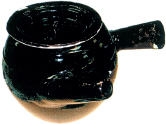
The use of water: Clean and fresh water. Tap water, well water or distilled water is normally used.
Degree and duration of heating: This may refer to a soft fire or a strong fire. Soft fire is also known as slow fire or small fire. Refers to increasing the temperature slowly, displaying a half-open “chrysanthemum heart” in the middle of the water or soup. Evaporation rate is 10% per hour. Strong fire is also known as rapid fire or swift fire. Refers to the rapid increase of temperature, displaying a fully blossomed “big chrysanthemum flower” in the middle of the water or soup. Evaporation rate is 20% per hour.
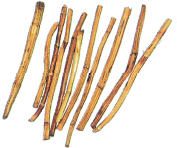
Methods of decocting
1.Soaking of medicines: 30 to 60 minutes, medicines to be fully submerged in water.
2.Decocting frequency: two times. Water added during the second decocting can be halved. After decocting twice, mix both medicinal soups, and consume on two separate occasions.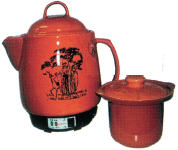
3.Degree and duration of heating decoction : based on the nature of different medicinal materials. Medicines for relieving exterior syndrome (jiebiaoyao  ) and heat-clearing herbs (qingreyao
) and heat-clearing herbs (qingreyao  ) should be decocted using a strong fire over a short period of time; for tonifying herbs (buyiyao
) should be decocted using a strong fire over a short period of time; for tonifying herbs (buyiyao  ), a soft fire should be used and the time taken should be longer.
), a soft fire should be used and the time taken should be longer.

Decocting methods as required by prescription
Medicines that possess unique characteristics will require the use of special decocting methods. Chinese physicians will usually indicate the decocting method required on the prescription. Some ways of decoction are as shown below:
1.Decoct first  : E.g. freshwater turtle shell, mother-of-pearl, calcite, magnetite are all hardly soluble medicinal materials. They are smashed and decocted first so that the effective medicinal component is extracted before other herbs are added. E.g. corn stigma, vegetable sponge, prepared aconite branch-root and Sichuan aconite root have toxic side-effects. The toxicity can be reduced after decocting the herbs for 45 to 60 minutes.
: E.g. freshwater turtle shell, mother-of-pearl, calcite, magnetite are all hardly soluble medicinal materials. They are smashed and decocted first so that the effective medicinal component is extracted before other herbs are added. E.g. corn stigma, vegetable sponge, prepared aconite branch-root and Sichuan aconite root have toxic side-effects. The toxicity can be reduced after decocting the herbs for 45 to 60 minutes.
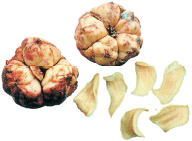
2.Add later  : This principle applies to fragrant herbs or herbs whose medicinal effect is destroyed when decocted for a long time. They are added 5 – 10 minutes after decocting other herbs so as to minimise loss of efficacy. E.g. peppermint, aucklandia root, amomum fruit, rhubarb, senna leaf, etc.
: This principle applies to fragrant herbs or herbs whose medicinal effect is destroyed when decocted for a long time. They are added 5 – 10 minutes after decocting other herbs so as to minimise loss of efficacy. E.g. peppermint, aucklandia root, amomum fruit, rhubarb, senna leaf, etc.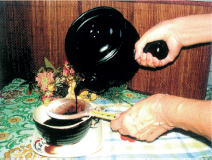
3.Decoct a herb wrapped  : Refers to herbs with high mucilage content, or powdered or downy herbs. These should be wrapped with a piece of cloth or gauze before being decocted together with other herbs, to prevent the medicinal liquid from turning turbid, irritating the throat or settling to the bottom. E.g. natural indigo, clamshell powder, lnula flower, plantain seed, etc.
: Refers to herbs with high mucilage content, or powdered or downy herbs. These should be wrapped with a piece of cloth or gauze before being decocted together with other herbs, to prevent the medicinal liquid from turning turbid, irritating the throat or settling to the bottom. E.g. natural indigo, clamshell powder, lnula flower, plantain seed, etc.
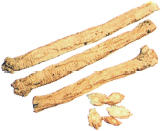
4.Decoct separately  : Some expensive herbs are decocted or stewed separately for two to three hours to obtain a better decoction. The decocted liquid can be taken by itself, or it can be mixed with other decocted medicinal liquids and drunk as a mixture. E.g. ginseng, turtle shell gelatin, antler, etc.
: Some expensive herbs are decocted or stewed separately for two to three hours to obtain a better decoction. The decocted liquid can be taken by itself, or it can be mixed with other decocted medicinal liquids and drunk as a mixture. E.g. ginseng, turtle shell gelatin, antler, etc.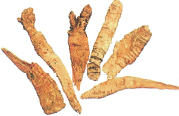
5.Melt  : Also known as dissolving by hot water (yanghua
: Also known as dissolving by hot water (yanghua  ). Some sticky herbs or highly adhesive, soluble herbs are melted using water or millet wine, consumed after pouring other decocted liquid on it, or taken after melting it with other decocted medicinal liquid. E.g. donkey-hide gelatin, antler gelatin, honey, malt extract, etc.
). Some sticky herbs or highly adhesive, soluble herbs are melted using water or millet wine, consumed after pouring other decocted liquid on it, or taken after melting it with other decocted medicinal liquid. E.g. donkey-hide gelatin, antler gelatin, honey, malt extract, etc.
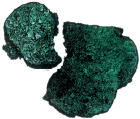
6.Medicine taken after macerating  : Applies to soluble herbs or herbs that are rendered ineffective by a long period of decoction. Macerate these a using small amount of boiling water or other medicinal liquids while they are boiling hot. Cover with lid and soak for 30 minutes before taking it. E.g. boat-fruited sterculia seed, safflower, senna leaf, etc.
: Applies to soluble herbs or herbs that are rendered ineffective by a long period of decoction. Macerate these a using small amount of boiling water or other medicinal liquids while they are boiling hot. Cover with lid and soak for 30 minutes before taking it. E.g. boat-fruited sterculia seed, safflower, senna leaf, etc.
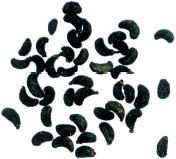
7.Medicine taken after pouring liquid on herb  : Some expensive medicinal materials disintegrate or lose their effects when subject to high temperature, thus they are ground and mixed with warm water or other medicinal liquids before consumption. E.g. musk, Phrynosoma, pearl, antelope’s horn, etc.
: Some expensive medicinal materials disintegrate or lose their effects when subject to high temperature, thus they are ground and mixed with warm water or other medicinal liquids before consumption. E.g. musk, Phrynosoma, pearl, antelope’s horn, etc.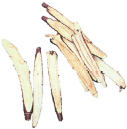
8.Decocted liquid to replace water  : some herbs turn turbid when decocted with other herbs, or some herbs absorb water easily so they need to be decocted first, after which the decocted liquid is used in place of water for decocting other herbs. E.g. corn stigma, vegetable sponge, etc.
: some herbs turn turbid when decocted with other herbs, or some herbs absorb water easily so they need to be decocted first, after which the decocted liquid is used in place of water for decocting other herbs. E.g. corn stigma, vegetable sponge, etc.

Fast facts
“Non-decoction” Chinese medicines
In recent years, an instant and convenient non-decoction Chinese medicine known as the Chinese medicine prescription granule  has been very popular in many countries such as the United States, Canada, Philippines and Singapore.
has been very popular in many countries such as the United States, Canada, Philippines and Singapore.
The Chinese medicine prescription granules are manufactured in factories which comply with GMP standards, applying advanced technology to extract Chinese herb concentrates to make traditional Chinese herbs into instant and non-decoction Chinese medicine granules. Chinese physicians need not change the prescription. The system will automatically convert the prescription into the right amount of granules, and then dispense them in small packets. Patients need only to use warm water of 80°C, stirring and adding water at the same time, and consume after the granules have completely dissolved. The taste and curative effects are consistent with those of traditional Chinese herbal decoctions.

